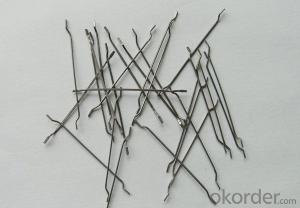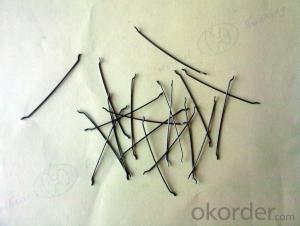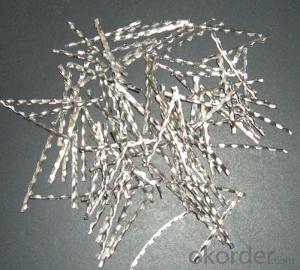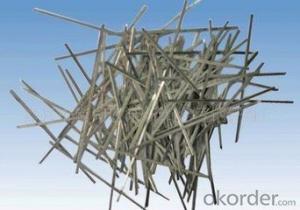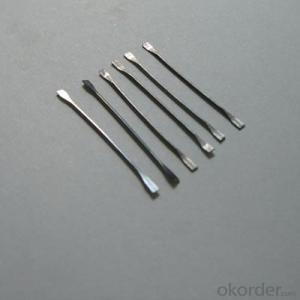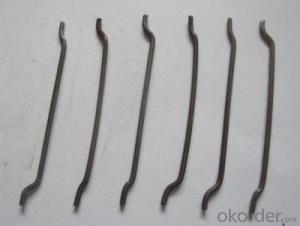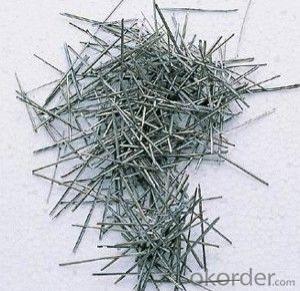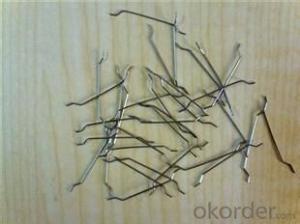Steel Fiber Reinforced Plastic Steam Thermal Insulating Steel Pipe
- Loading Port:
- Tianjin
- Payment Terms:
- TT OR LC
- Min Order Qty:
- 5 kg
- Supply Capability:
- 30000 kg/month
OKorder Service Pledge
OKorder Financial Service
You Might Also Like
Quick Details
Place of Origin: Jiangsu, China (Mainland)
Model Number: HT-ST
Material: Steel
Specifications
1 | Outer Diameter | 10mm-630mm |
2 | Wall Thickness | 2mm-22mm |
3 | Length | 5M-12M |
4 |
Standard | GB/T13793-1992, GB/T3091-2001, GB/T9711.1-1997, API 5L, API 5CT, EN10217, EN10219, ASTM A53 We negotiate the technology agreement about materials. |
5 |
Material | Q195-Q235, 20# , Q345(B/C) L175-L555 (A/B,X42-X80), J55, K55 N80, L80 C90,C95 P110 Q125 |
6 |
Application | Widely used in transportation of natural gas, conveyance of liquid oil and a series of gas and liquid, and also used in the fields of aerospace, energy, electronics, automobile, light industry, etc. It’s one of the most important technologies in the world. |
7 |
Packing | thermal insulation; Plastic caps can be added on both ends of pipes; Pipe are bundled into hexagonal shape with steel wires or Steel strips; adding plastic or nylon braided bag; Other ways of packing can be made according to customer’s requirements. |
8 | Day of Delivery | 15-30 days or according to the order’s quantity. |
9 | Terms of Payment | T/T |
10 | Minimum Order Quantity | 10Ton |
Picture
Steel fiber straight type
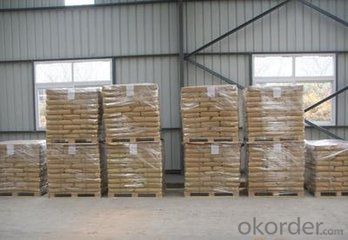
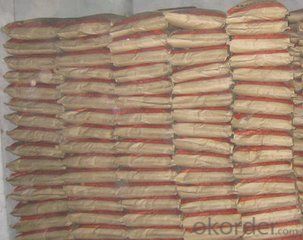
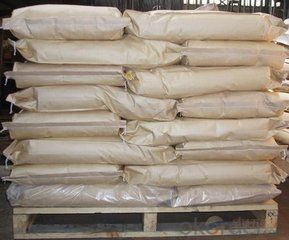
FAQ
certificated: ISO 9001
Technical advantages of Daye steel fiber:
A. Improve mechanical performance of concrete
B. Provide uniform distribution throughout concrete with excellent mixing
C. No balling or caking by adopt correct mixing method
D. Reduce concrete volume
E.Save construction time and cost
F.Reduce excavation volume
G.Available for jointless floor.
- Q:Can melt extract stainless steel fiber be used in asphalt reinforcement?
- Yes, melt extract stainless steel fiber can be used in asphalt reinforcement. Stainless steel fibers are often added to asphalt mixtures to enhance their mechanical properties and improve their resistance to cracking and fatigue. These fibers are typically melt-extracted from stainless steel materials, resulting in a high-strength and corrosion-resistant reinforcing element. When added to asphalt, stainless steel fibers can increase the tensile strength, flexibility, and durability of the pavement, making it more resistant to rutting, cracking, and other forms of distress. Additionally, the use of stainless steel fibers can also improve the overall lifespan of the asphalt pavement by reducing maintenance and repair needs. Therefore, melt extract stainless steel fiber is a suitable option for asphalt reinforcement and can provide numerous benefits in terms of performance and longevity.
- Q:Can melt extract stainless steel fiber be used in high-performance concrete applications?
- Yes, melt extract stainless steel fiber can be used in high-performance concrete applications.
- Q:How does melt extract stainless steel fiber enhance the fatigue resistance of concrete?
- Melt extract stainless steel fiber enhances the fatigue resistance of concrete by increasing its toughness and durability. The fibers act as reinforcement, improving the concrete's ability to withstand repeated loading and reducing the formation and propagation of cracks. This results in a stronger and more resilient concrete structure that can withstand cyclic loading without experiencing fatigue failure.
- Q:The steel fiber concrete cover per cubic concrete how much steel fiber
- After buying the equipment, they provided us with a recipe ratio.
- Q:Can melt extract stainless steel fiber be used in shotcrete tunnel boring machine applications?
- Melt extract stainless steel fiber is indeed applicable in shotcrete tunnel boring machine applications. Shotcrete, which involves the application of concrete or mortar through a high-pressure hose, can benefit from the addition of stainless steel fiber. This addition enhances the shotcrete's mechanical properties and durability. The stainless steel fiber is produced through a melting and extraction process, resulting in a high-strength fiber that exhibits excellent corrosion resistance. These desirable qualities make it well-suited for tunnel boring machine applications where the shotcrete must withstand high pressures, vibrations, and potential exposure to moisture or chemicals. Moreover, the stainless steel fiber contributes to improved flexural and tensile strength of the shotcrete, thereby minimizing the risk of cracking and bolstering the overall stability and performance of the tunnel structure.
- Q:Can melt extract stainless steel fiber be used in precast tunnel portals?
- Precast tunnel portals can benefit from the utilization of melt extract stainless steel fiber. This material, renowned for its exceptional durability and resistance to corrosion, is widely employed in construction projects, specifically those involving tunnels. The incorporation of stainless steel fiber in tunnel portals serves to bolster the overall sturdiness and longevity of the precast concrete panels. By reinforcing the concrete, it fortifies its ability to withstand cracks and spalling, which is especially crucial due to the substantial stress and impact experienced by tunnel portals. Moreover, stainless steel fiber also enhances the fire resistance of precast panels. It effectively safeguards the concrete against spalling and disintegration when subjected to high temperatures, thus enhancing the structural integrity of the tunnel portal in the event of a fire. Additionally, melt extract stainless steel fiber exhibits remarkable resistance to corrosion, rendering it suitable for use in tunnel portals exposed to harsh environmental conditions, such as moisture and chemicals. It contributes to extending the lifespan of precast panels while minimizing the necessity for frequent maintenance or repairs. In summary, melt extract stainless steel fiber proves to be an effective solution for enhancing the strength, durability, fire resistance, and corrosion resistance of precast tunnel portals. Its integration into the construction process leads to the creation of tunnel portals that are longer-lasting and more dependable.
- Q:How does melt extract stainless steel fiber contribute to the fatigue behavior of concrete?
- Melt extract stainless steel fiber plays a significant role in enhancing the fatigue behavior of concrete. The addition of these fibers in the concrete mix improves its resistance to cracking and increases its durability, particularly under cyclic loading conditions. One of the main ways in which melt extract stainless steel fiber contributes to the fatigue behavior of concrete is by reducing the propagation of microcracks. As concrete is subjected to repeated loading and unloading cycles, microcracks begin to form and propagate, leading to eventual failure. However, the presence of stainless steel fibers acts as a reinforcement, effectively bridging these microcracks and preventing their further propagation. This improves the overall fatigue resistance of the concrete and extends its service life. Moreover, melt extract stainless steel fibers also enhance the tensile strength and ductility of concrete. Concrete is known for its low tensile strength, and the inclusion of fibers helps to overcome this weakness. The fibers distribute the applied load more evenly throughout the concrete matrix, reducing stress concentrations and enhancing its ability to withstand cyclic loading. This, in turn, leads to improved fatigue behavior. Additionally, the use of melt extract stainless steel fibers in concrete can also improve its resistance to corrosion. Stainless steel is inherently resistant to corrosion, and when incorporated into the concrete mix, it acts as a protective barrier against the ingress of aggressive substances such as chlorides and sulfates. This helps to prevent corrosion of the reinforcing steel within the concrete, which can weaken its structural integrity and lead to premature failure. In conclusion, melt extract stainless steel fiber greatly contributes to the fatigue behavior of concrete by reducing microcrack propagation, increasing tensile strength and ductility, and improving resistance to corrosion. These benefits enhance the overall durability and lifespan of concrete structures, making them more reliable and cost-effective in the long run.
- Q:What is the effect of melt extract stainless steel fiber on the shrinkage and cracking of concrete?
- The use of melt extract stainless steel fiber in concrete can significantly reduce shrinkage and cracking. The fibers act as reinforcement within the concrete, enhancing its overall tensile strength and improving its resistance to shrinkage. This reinforcement helps to distribute stresses more evenly throughout the concrete, minimizing the formation of cracks and reducing their potential for propagation. Additionally, the stainless steel fibers also provide increased resistance to temperature changes and external loads, further reducing the likelihood of shrinkage and cracking in the concrete.
- Q:Can melt extract stainless steel fiber be used in wastewater treatment plant construction?
- Melt extract stainless steel fiber is indeed suitable for use in the construction of wastewater treatment plants. Its high strength, durability, and resistance to corrosion make it a commonly employed material in construction projects. Given the constant exposure to moisture and chemicals in wastewater treatment plants, the incorporation of stainless steel fibers can significantly enhance the performance and lifespan of construction materials. These fibers can be added to concrete, cement, or other composite materials to enhance their mechanical properties and increase their resistance to cracking, spalling, and deterioration. Moreover, stainless steel fibers can also minimize crack formation and enhance the overall structural integrity of the construction elements. Consequently, opting for melt extract stainless steel fibers is a viable choice for the construction of wastewater treatment plants.
- Q:What is the impact of melt extract stainless steel fiber on the drying shrinkage of concrete?
- The impact of melt extract stainless steel fiber on the drying shrinkage of concrete is generally positive. Melt extract stainless steel fiber is a type of reinforcement material that is added to concrete mixes to enhance its properties, including reducing drying shrinkage. Drying shrinkage is the phenomenon where concrete undergoes a reduction in volume as it loses moisture during the curing process. This shrinkage can lead to cracks, which can compromise the durability and aesthetics of the concrete structure. By adding melt extract stainless steel fiber to the concrete mix, the fibers help to mitigate the drying shrinkage. The fibers act as a reinforcement, improving the overall tensile strength of the concrete and reducing the potential for cracking. The melt extract stainless steel fibers are typically distributed evenly throughout the concrete mix, creating a network of reinforcement that helps to restrain the shrinkage. As the concrete dries, the fibers provide resistance to the tensile stresses that occur due to shrinkage, thus minimizing the formation of cracks. Additionally, the stainless steel fibers also enhance the overall mechanical properties of the concrete, including its flexural strength, impact resistance, and resistance to fatigue. This increased strength and durability contribute to a longer service life of the concrete structure. It is important to note that the impact of melt extract stainless steel fiber on drying shrinkage may vary depending on various factors such as the dosage of fibers, the water-cement ratio, the concrete mix design, and the curing conditions. Therefore, it is crucial to carefully consider these factors and conduct appropriate testing and analysis to determine the optimum dosage and performance of melt extract stainless steel fiber for each specific application. In conclusion, the addition of melt extract stainless steel fiber to concrete can effectively reduce drying shrinkage and minimize the formation of cracks. This reinforcement material improves the overall mechanical properties of the concrete, leading to a more durable and long-lasting structure.
1. Manufacturer Overview |
|
|---|---|
| Location | |
| Year Established | |
| Annual Output Value | |
| Main Markets | |
| Company Certifications | |
2. Manufacturer Certificates |
|
|---|---|
| a) Certification Name | |
| Range | |
| Reference | |
| Validity Period | |
3. Manufacturer Capability |
|
|---|---|
| a)Trade Capacity | |
| Nearest Port | |
| Export Percentage | |
| No.of Employees in Trade Department | |
| Language Spoken: | |
| b)Factory Information | |
| Factory Size: | |
| No. of Production Lines | |
| Contract Manufacturing | |
| Product Price Range | |
Send your message to us
Steel Fiber Reinforced Plastic Steam Thermal Insulating Steel Pipe
- Loading Port:
- Tianjin
- Payment Terms:
- TT OR LC
- Min Order Qty:
- 5 kg
- Supply Capability:
- 30000 kg/month
OKorder Service Pledge
OKorder Financial Service
Similar products
New products
Hot products
Related keywords

